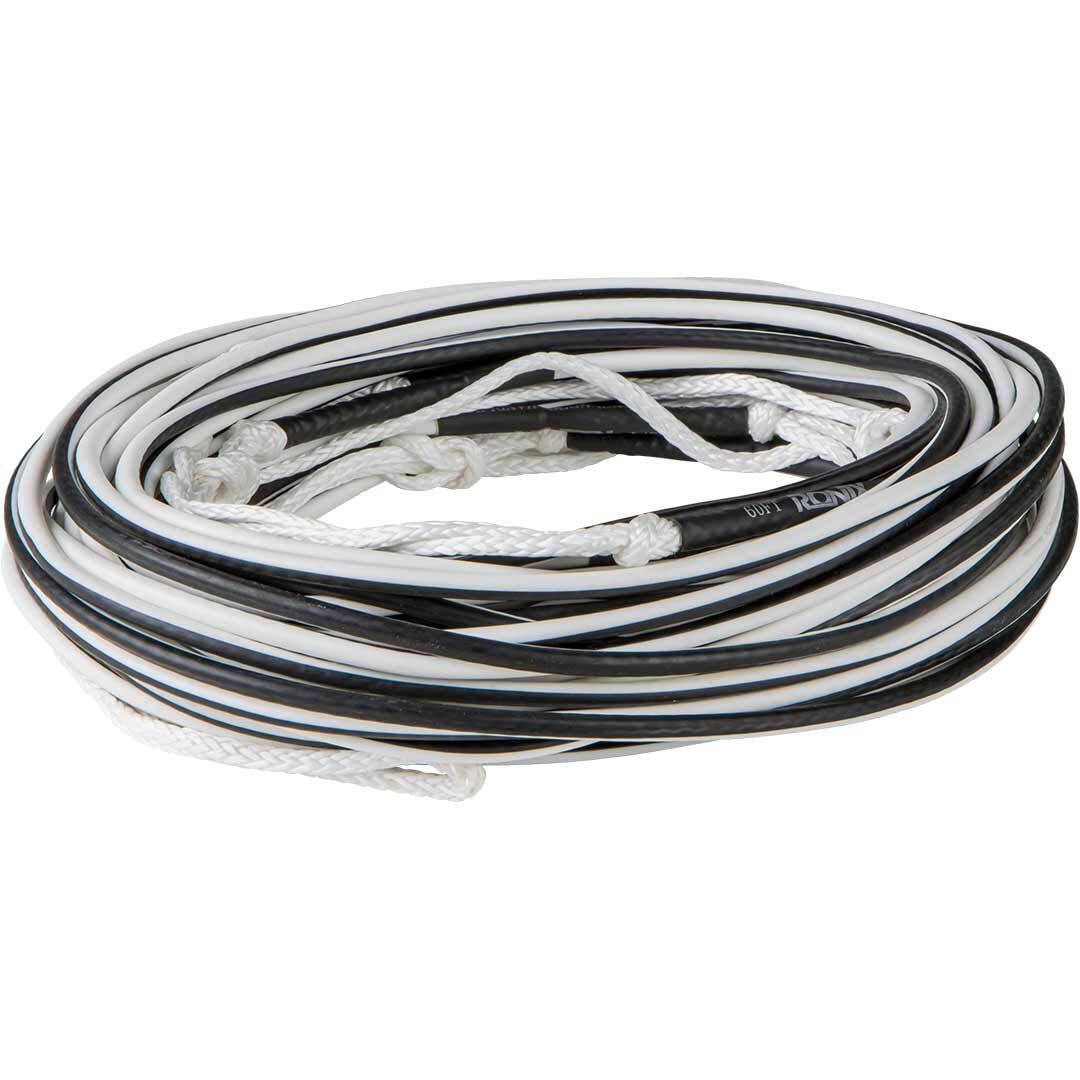If you’re looking for your first wakeboard or water ski rope you may be wondering why there are different ropes for each activity; after all, you just need a rope and a handle right? In this post you’ll learn the differences in rope design and construction that will make sure you have the right gear for your time on the water.
The first large difference between the two is the overall length, as well as the size of removable sections as you shorten the rope. A slalom ski rope, including the handle which is 5 feet long on its own, is typically 75 feet long. The take off sections are measured in length of rope that has been removed as you shorten the rope. The first section is “15 off” which means when you remove the first section you’ll be skiing 60 feet from where the rope is attached. From there the sections are 22’ off, 28’ off, 32’ off, 35’ off, 38’ off, 39.5’ off, 41’ off, and 43’ off.
The rope is usually colored differently from section to section to easily identify. Recreational skiers may enjoy skiing full length, while 15’ off is a common starting point for more advanced skiers as they work their way to a shorter, and more difficult line length if they’re in the ski course.

Wakeboard ropes can vary in total length as line length is more of a preference with wakeboarding. Beginner ropes usually go from about 50’ to 75’ in total length, while more advanced riders will want a rope that goes from 65’ to 85’. Generally speaking a shorter line length, such as 55 feet, is easier if you’re learning to clear the wake as the wakes are closer together. As a rider progresses and wants more air time between wakes they may want to lengthen their rope length. Advanced and pro riders will ride as far back as 85’.
The take off sections for wakeboard ropes are named by total rope length, and will be at least 5’ sections. Some ropes have 2.5’ sections, but 5’ is the standard. If you find a rope that says it is 75’ with 5 sections that would mean the rope is made up of 1 55’ section, and 4 5’ sections.
The next difference is rope material. Ski ropes are designed to stretch slightly as the skier is in their turn; not like a bungee, but enough to not jolt the skier. Wakeboard ropes are the exact opposite, and are built to have no stretch at all. As a wakeboarder cuts into the wake and gets airborne they need to have a constant rope length that won’t recoil when they leave the wake.

Since a wakeboard rope is non-stretch you can find some ropes that offer a smooth coating over the rope. These ropes offer benefits like being less likely to tangle, running through your hands with less friction, and some keep the rope afloat if you’re stopped in the water for a while switching riders.
If you have any questions please contact us, and for information regarding water ski and wakeboard handle differences, take a look at our blog post: Waterski Vs. Wakeboard Handles.